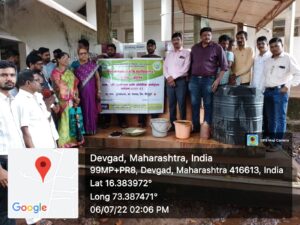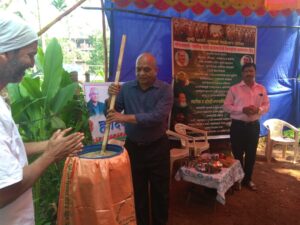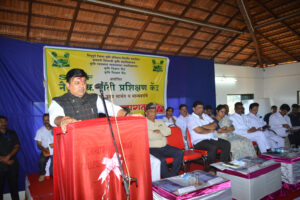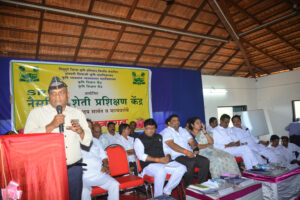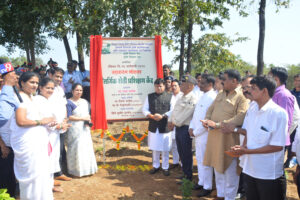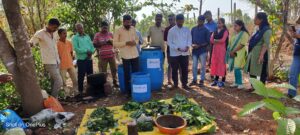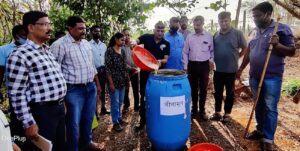Natural Farming
SWOT analysis of NF
Strengths
- Providing wonderful solutions to the challenges of present agriculture in the state
- Potential to contribute to the global effort to overcome the challenges of climate change
- Improving profitability in agriculture
- Improving farmers’ health
- Reducing farmers’ stress
Opportunities
- Growing demand for chemical free food
- International support for the mitigation and adaption of the climate change
Weakness
- Not able to reach the needy
- Not able to command the commensurate prices
- Less awareness and inadequate extension services
- Non-availability of readymade biological inputs at the time of requirement.
- No improvement in biological inputs formulations
Threats
- The programme is going against the powerful mainstream industries, institutions and policies
Objectives of NF
- Ensuring food security and producing more with less resources.
- For building the resilience of smallholder farmers for creating a food-secure future.
- NF is the right solution to fight climate change and create resilient food systems.
- Fighting drought is one of the main objectives of NF.
- The Food and Agriculture Organization (FAO) of the UN advocates environmentally-friendly farming methods that can take us to a more sustainable future.
- Importance for chemical free food consumption is growing rapidly.
- Chemical farming has made food a poison and also has reduced the yield by making lands barren.
- Farmers’ welfare and sustainable practices are vital for a sustainable and productive economy.
- NF constitutes an effective strategy for achieving SDGs targets.
Features of NF
- It is a farming practice that believes in natural growth of crops without adding any chemical fertilizers and pesticides.
- The four wheels of NF are Bijamrut, Jivamrut, Mulching and Waaphasa.
- Bijamrut is a natural way of seed treatment using local cow urine and cow dung.
- Jvamrut is made using water, local cow dung, local cow urine, jaggery, dal flour and soil.
- Waaphasa is the aeration in the soil.
- NF is different from organic farming.
- Intercropping is an important feature of NF.
- Practicing composting on the farm itself, so that soil organic matter increases.
- Storing water in the farm ponds for use in adverse conditions.
- Insects and pests are managed using neem leaves, neem pulp and green chillies.
- Establishing farmers’ federations and self-help groups, and placing farmers at the forefront of knowledge creation and dissemination.
Advantages
- Besides reduced input cost, farmers practicing NF gets higher yields.
- Elimination of chemical pesticides and promotion of good agronomic practices.
- Promote regenerative agriculture, improve soil biodiversity and productivity.
- Ensure decent livelihoods to smallholder farmers.
- Restore ecosystem health through diverse, multi-layered cropping systems.
- Anyone who is having half an acre of land can start NF.
- Using NF techniques, one can convert even the most infertile land into a fertile one.
- Women’s empowerment and nutrition.
Basic Pillars of NF
| Sr.No. | Methods | Preparation | Benefits |
| 1 | Jivamrita/ Jeevamrutha
|
It is composed of the cow-dung (20 kg), urine (5-10 l), jaggery (2.0 kg) and dicot flour (2 kg), 200lit water and is applied to the crops with each Irrigation cycle OR directly to the crops.
|
It provides nutrients, but most importantly, acts as a catalytic agent that promotes the activity of microorganisms in the soil, as well as increases earthworm activity. Jeevamrutha also helps to prevent fungal and bacterial plant diseases. that Jeevamrutha is only needed for the first 3 years of the transition, after which thesystem becomes self-sustaining. |
| 2 | Bijamrita | It is basically made up of water (20l), cow dung (5kg), urine (5l), lime (50gm) and just a handful of soil. | Bijamrita is a seed treatment, equipped in protecting young roots from fungus as well as from soil-borne and seed-borne diseases. |
| 3 | Acchadana
Mulching |
It could be done by soil mulch, straw mulch or live mulch | It conserves soil moisture, by reducing evaporation. |
| 4 | Whapasa–
moisture |
The irrigation should be reduced and irrigation should be practiced only at noon ,inalternatefurrows
|
Palekar challenges the idea that plant roots need a lot of water, in-fact, what roots need is water vapour, and therefore, Whapasa is the condition where there exist both air molecules and water molecules present in the soil. |
